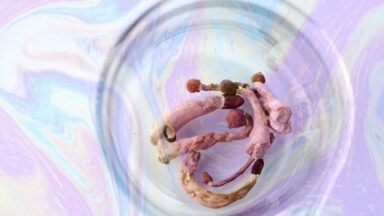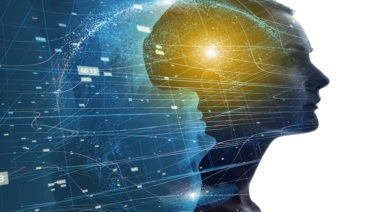What is Astral Projection?

Call it what you like — dream body, astral body, energy body, Buddhist light body, Taoist diamond body, Egyptian ka, Tantric subtle body, Hindu body of bliss — and in Christianity, the experience of different “heavens,” i.e. “I know a man who was caught up to the third heaven. Whether it was in our out of body, I do not know,” from Corinthians 12:1-4. The subtle body is a universal human experience, and apparently part of our standard human design like toenails and kidneys. It is this subtle body that projects astrally and is active during unconscious and lucid dreaming; astral projection and dreaming often go hand-in-hand as “out-of-body” experiences, or OBEs.
The subtle body, when cultivated, can survive the physical body as a matrix for consciousness, and astral projection and lucid dreaming are part of spiritual training paths for subtle body cultivation. Neophytes confuse the subtle body with the soul or spirit, two additional aspects of multi-dimensional humans.
Out of Body Experiences and Astral Projection
The OBE can be intentional or involuntary, as with near-death events when people report finding themselves floating near the ceiling of their hospital rooms, perhaps observing medical staff attempting to revive them. Trauma, illness, or water and food deprivation, as with Native American vision quests, can trigger OBEs. Lucid dream states are opportunities for intentional OBEs. For the purposes of this article, OBEs may be spontaneous, and astral projection a conscious choice, though some would argue otherwise.
Essentially, the OBE begins with an experience of leaving the body and consciously observing it from a detached perspective. With practice and lucidity, awareness can be directed to locations or activities like flight. Yes, flight. If you’ve had flying dreams — literal flying, no 747 required — or being in the sky, you’ve had OBEs. Some say that we have regular OBEs during sleep, often hovering a few inches over our physical bodies.
Neuroscientists are puzzled — while the experience is no longer dismissed out of hand by medical professionals, science holds the view that OBEs involve neurological or brain dysfunction. After his own experience, Dr. Raymond Moody MD became interested in near death OBEs, and for decades interviewed hundreds of experiencers and collected data, defining common qualities of OBEs. Moody identified nine common elements of a near-death OBE — some experiencing all, some, only two or three.
Benefits of OBE
The tantrics mastered lucid OBE and dream states to overcome the fear of death by learning that we are not our “bodies.” They also discovered that the physical body can experience deep healing during OBEs — the mind can be tough on the body. And rather than losing time to practice meditation during sleep, yogis continued working through the night while the body rested.
Some athletes learn lucid dreaming to practice and visualize their game. By working in a dream or out-of-body, not only do they visualize, they have a “felt sense” of their practice, and can actually acquire the muscle memory for winning habits. Others benefit from the opportunity to explore past lives as well as accelerated personal development.

It is our energy, or subtle body that comes and goes from our physical form.
Astral Projection Methods
There are dozens of methods to learn conscious OBE and astral projection. There are two approaches — one is to keep the mind awake while the body falls asleep. It’s tricky — the mind wants to do what the body is doing. The goal is to take the body into deeper and deeper states of relaxation without drifting into unconsciousness. Yoga Nidra is one method. Once the body enters sleep state, practitioners simply “roll” out of their physical form.
Ancient yogis would tie two frogs together before sleep. Once tied, the frogs would continuously croak— a yogi would use the sound to anchor awareness as the body drifted into sleep, and either leave the body, or enter lucid dream states. If, during a dream, the yogi could no longer hear the frogs, he/she knew lucidity had been lost, and could “wake” again within the dream.
How to Astral Project/Travel
Monroe Institute Steps
Bob Monroe, founder of the leading research organization in the field of human consciousness called The Monroe Institute, penned a body of work titled “Journeys Out of the Body” in 1971 in which he provides a detailed outline for how to astrally project one’s self in seven steps:
- Step 1: Relax, both physically and mentally.
- Step 2: Enter a hypnagogic state, or half-sleep.
- Step 3: Deepen the state by prioritizing mental sensation over physical sensation.
- Step 4: Pay attention to the presence of vibration in your environment, which becomes apparent in a state of deep attention.
- Step 5: Incur the vibration in your physical body, and relax into its presence. The purpose of this is to gently jiggle the subtle body out of the physical body.
- Step 6: Focus your thoughts on leaving the limbs and the torso, and try to do so one at a time.
- Step 7: Known as “lifting out,” focus on effortlessly drifting out of your physical body.
The Astral Projection Rope Technique
From the work of Robert Bruce, founder of the Astral Dynamics movement, the rope technique is regarded one of the most accessible astral projection methods.
Step 1: Relax the physical body by visualizing each muscle.
Step 2: From your space of relaxation, enter a vibrational states; this should feel like an amplified version of a cell phone’s vibration mode pulsations coursing through the body.
Step 3: Imagine a rope hanging above you.
Step 4: Using the astral, or subtle, body, attempt to hold on to the rope with both hands. The physical body remains completely relaxed.
Step 5: Begin to climb the rope, hand over hand, all the while visualizing reaching the ceiling above you.
Step 6: Once you are aware of your full exit of the physical body, you are able to explore the astral plane.
Lucid Dreaming Techniques
Again, there are numerous lucid dreaming techniques. Some are designed to train the sleeper to wake within the dream, others offer methods of staying lucid while letting the body fall asleep.
A Nootropic Approach
Yes, it’s sounds weird. Nicotine has specific actions on brain chemistry — but no, it’s not about smoking. Considered a cognitive enhancer, nicotine is gaining fans among biochemical brain hackers.
Many, using nicotine patches to quit smoking, have inadvertently discovered what happens when they forget to remove a patch before sleep. Nicotine can induce hyper-realistic, but bizarre dreams that are so outrageous that many simply say to themselves, “Omg. This MUST be a dream. It’s too nuts to be anything else.” And voila — lucidity is attained. This is not an endorsement of the method, as many report nightmares when using nicotine.
Lucid Dreaming With Habit and Repetition
We attain lucidity the instant we recognize we’re in a dream state. Some people train by asking themselves, several times a day for days or weeks, “is this a dream?” The question eventually gets stuck in the place songs and jingles get stuck and are hard to unstick — things like “Afternoon Delight” by the Starlight Vocal Band. You know what we’re talking about.
The premise is that the question begins to habitually repeat by itself, and that eventually the mind will ask during a dream. When the dreamer answers, “why yes, this IS a dream!” they achieve lucidity.
The best opportunities for becoming lucid within a dream are during REM (rapid eye movement) sleep. This stage happens in the first two hours after we fall asleep and before we wake up. By waking and going back to sleep during the night we increase REM sleep time. Some use the sleep/wake method by setting interval alarms during the night, getting up for a few minutes, and going back to sleep with an intention of keeping the mind awake. If awakened during a dream, immediately go back to sleep — if possible, re-enter the dream with lucidity.
What Is Clairaudience and How to Develop It

Clairaudience is the psychic ability to perceive sounds beyond the normal range of human hearing, such as voices from spiritual beings or messages from the universe. This ability allows for clear and direct communication with non-physical entities, enriching the connection with the spiritual world. In this article, we explore what clairaudience is, its relationship with channeling, and how to develop it effectively.
Table of Contents
- What Is Clairaudience?
- Clairaudience and Channeling
- Spiritual Entities That Can Be Heard
- How to Develop Clairaudience
- Can Everyone Develop Clairaudience?
- Benefits of Clairaudience in Spiritual Growth
- Differences Between Clairaudience and Other Psychic Abilities
What Is Clairaudience?
Clairaudience is a psychic ability that allows individuals to hear sounds and voices that are not perceptible to the ordinary human ear. These sounds can come from spiritual guides, angels, or even deceased loved ones who wish to communicate. Unlike other psychic abilities like clairvoyance, which is based on vision, clairaudience uses hearing to receive information from the spiritual plane.
This ability may arise spontaneously or develop through practices such as meditation and intuitive listening, providing a deeper connection with the spiritual world and a clearer understanding of the messages received.
Clairaudience and Channeling
Clairaudience is closely linked to channeling, as both abilities allow the reception of information from non-physical sources. Channeling is the process by which a person allows a spiritual entity to communicate through them, using various psychic abilities, including clairaudience. Through this ability, a channeler can hear and transmit messages from spiritual guides, angels, or interdimensional beings.
In the series Channeling: A Bridge to the Beyond, available on Gaia, experts explore how clairaudience and other psychic abilities are used in channeling practice. The series offers an in-depth view of these spiritual experiences and how the voices perceived through clairaudience can provide guidance and wisdom.
Spiritual Entities That Can Be Heard
Clairaudience allows the perception of a variety of spiritual entities that offer different types of messages and guidance:
- Spiritual Guides: Beings that assist on the spiritual path, providing guidance and support in daily life.
- Deceased loved ones: They may communicate to offer comfort, guidance, or resolve unfinished matters.
- Spirit animals: Guides in animal form that offer protection and wisdom based on animal energy.
- Elemental beings: Entities associated with nature’s elements, such as fairies, gnomes, and earth spirits, offering guidance on connecting with the natural world.
- Angels: Beings of light that protect and guide, offering messages of love and peace.
- Ascended masters: Highly evolved spirits that share profound spiritual wisdom and knowledge.
- Interdimensional entities: Beings from other dimensions that can provide information about the universe and life’s purpose.
How to Develop Clairaudience
Developing clairaudience takes practice and patience, as it is a skill cultivated over time. Practicing meditation, keeping a clairaudience journal, and performing intuitive listening exercises are effective methods for strengthening this ability.
Meditation to Open Clairaudience
Meditation is an essential tool for developing clairaudience. Start by finding a quiet place and sitting in a comfortable position. Close your eyes and take several deep breaths to relax your body and mind. Focus on the sounds around you, noticing both obvious and subtle noises.
As you enter a deeper state of relaxation, visualize a golden light surrounding your ears, opening them to new auditory perceptions. Imagine this light clearing away any blockages that may prevent you from hearing spiritual messages. Regular practice of this meditation will help sharpen your ability to listen and perceive spiritual sounds.
Intuitive Listening Exercise
The intuitive listening exercise is an effective practice for developing clairaudience. Find a quiet place and relax. Close your eyes and take several deep breaths to center yourself. Then, focus your attention on the sounds around you, trying to identify each one without judgment.
After a few minutes, shift your attention to internal sounds. Mentally ask if there is any message or guidance you need to receive. Allow yourself to hear any words, phrases, or sounds that arise in your mind without dismissing anything. Write down your experiences after the exercise, as this will help you recognize patterns and enhance your intuitive auditory ability.
Clairaudience Journal
Keeping a clairaudience journal is an excellent way to track your progress and analyze the messages you receive. Dedicate some time each day to write down any sound, voice, or knowledge you’ve perceived, even if they seem trivial. Note specific details, such as the context and how you felt when receiving the message.
Reviewing your journal regularly will allow you to see how your ability has evolved and what types of messages are most common. This practice not only strengthens your clairaudience but also helps you trust your perceptions more and better understand the messages you receive.

Can Everyone Develop Clairaudience?
Developing clairaudience is a skill within reach for anyone willing to dedicate time and effort to its practice. While some people may have a natural predisposition for psychic abilities like clairaudience, most can develop these capacities through consistent practice and an open mind.
It’s important to understand that, like any other skill, the development of clairaudience varies from person to person. Some may experience rapid progress, while others may need more time to notice improvements. The key is patience, persistence, and a willingness to trust and accept the perceptions received.
In the series Open Minds, available on Gaia, various techniques and personal experiences of people who have developed their psychic abilities, including clairaudience, are presented. In season six, Regina Meredith interviews Mariana Cooper, a psychic who explains that we all have latent psychic talents and describes different types of psychic abilities and communication styles to open our intuitive senses.
Benefits of Clairaudience in Spiritual Growth
Clairaudience offers numerous benefits for spiritual growth, allowing practitioners to connect more deeply with the universe and their inner selves. This ability can transform how a person perceives and relates to the spiritual world, providing guidance, comfort, and clarity on their spiritual journey.
- Spiritual Guidance: Clairaudience allows for receiving messages and advice from spiritual guides, helping with important life decisions and steps.
- Connection with the Higher Self: This ability helps connect with the higher self, offering a deeper understanding of oneself and one’s life purpose.
- Emotional Healing: Receiving comforting and supportive messages through clairaudience can help heal emotional wounds and overcome past traumas.
- Clarity and Focus: Messages perceived through clairaudience provide clarity and direction, helping to focus energy on spiritual goals and life objectives.
- Development of Intuition: Practicing clairaudience strengthens general intuition, enhancing the ability to perceive and understand subtle signs in daily life.
Differences Between Clairaudience and Other Psychic Abilities
Clairaudience differs from other psychic abilities in its focus on auditory perception of spiritual information, while other abilities may involve different senses or forms of perception. Each psychic ability has its own method and area of focus, offering various ways for a person to receive and process information from the spiritual world.
- Clairvoyance: Refers to the ability to see images, people, or events that are not physically present. Unlike clairaudience, which involves hearing, clairvoyance is based on visual perception.
- Clairsentience: Involves feeling or perceiving physical or emotional sensations psychically. While clairaudience focuses on auditory perception, clairsentience is related to feelings and sensations.
- Claircognizance: Intuitive knowledge of information without knowing how it was acquired. Unlike clairaudience, which manifests as sounds or voices, claircognizance is an instant understanding without specific sensory input.
- Telepathy: The ability to communicate mind to mind without using the traditional five senses. While clairaudience involves hearing voices or sounds, telepathy is based on the direct transmission of thoughts between individuals.




































